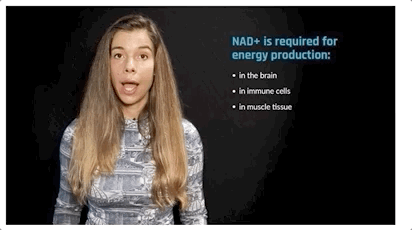Prolonged fasting and fasting-mimicking preferentially deplete visceral fat rather than lean mass
Get the full length version of this episode as a podcast.
This episode will make a great companion for a long drive.
The Omega-3 Supplementation Guide
A blueprint for choosing the right fish oil supplement — filled with specific recommendations, guidelines for interpreting testing data, and dosage protocols.
Prolonged fasting and a fasting-mimicking diet are both comparable to exercise in that they involve cycles of cellular damage and repair. During a fasting-mimicking diet, the body consumes both visceral fat and lean body mass for energy. However, upon refeeding only lean muscle mass is regenerated. The overall result, a loss of visceral fat without depleting lean muscle mass, is a desirable feature of a prolonged fast, particularly for athletic performance. In this clip, Dr. Valter Longo describes how a fasting-mimicking diet can be used for fat loss while preserving lean muscle mass.
Rhonda: Something else I that comes to my mind as well as wanting the IGF-1 to go where it's supposed instead of sitting around in your serum, and the bloodstream, but going to the muscle, going to the brain. And I know that it's been shown in humans that IGF, yeah, it's been shown in humans that acute exercise, I think it was aerobic, lowers serum IGF-1. And I think it's because it's going to the muscle, also to the brain, because in mice, it's been shown that exercise causes IGF-1 to cross the blood-brain barrier and get into the brain. So, that's another good reason to exercise is because, now, the IGF-1 that you have, you know, is going to the places where it should.
Valter: Right. Yes. So exercise out, obviously there's no doubt that it's very beneficial. And some of it may be related to the fasting, meaning that exercise is known to do damage to the muscle, right? And so, that damage, and then it's known that after the damage, you get repaired. And that's also known that the repair is what builds the muscle, right? So, this may be not as potent as the fasting, but if you do it all the time, it could be that you have all these small regenerative processes occurring every couple of days, if you access every couple of days. And then, you know, eventually, those cumulatively, it could be actually very powerful, and, yeah, so...
Rhonda: Really in combination with the fasting too, I mean, if you're going to eat your protein and activate IGF-1, then it's good to exercise to make sure it's going to the right place, right? And so, it's...
Valter: Yeah. Yeah, yeah. And, yeah, absolutely. And in the book that I wrote, I really talked about exercise and the need to exercise to make sure that some of these restrictions don't end up in loss of lean body mass. Because the exercise, especially the weight training, is very important in sending the signals to the muscle to rebuild it. And this is really another very interesting thing about fasting, which is it takes the energy from the visceral fat, but it also takes energy from the muscle. But then, unlike other diets, it rebuilds the muscle. And so, now, in clinically, we see a specific loss of fat only significant in the visceral area, and then, no loss, or very minimal loss of lean body mass, right? Because there is a temporary loss, but then rebuild it. So, it's really interesting, and is what athletes are starting to become very interested in this fasting-mimicking diets because...
Rhonda: Right. Yeah.
Valter: Because, you know, most of the diets will get rid of water, muscle, and fat, right?
Rhonda: Right. And you wanna increase lean muscle mass, and decrease fat mass, I mean, that's...
Valter: Yeah. Or at least leave alone the lean body mass, and decreasing fat. Where you have, you know, you're switching to a state that is much more beneficial to your pro-athletic performance, yeah.
A highly selective semi-permeable barrier in the brain made up of endothelial cells connected by tight junctions. The blood-brain barrier separates the circulating blood from the brain's extracellular fluid in the central nervous system. Whereas water, lipid-soluble molecules, and some gases can pass through the blood-brain barrier via passive diffusion, molecules such as glucose and amino acids that are crucial to neural function enter via selective transport. The barrier prevents the entry of lipophilic substances that may be neurotoxic via an active transport mechanism.
A diet that mimics the effects of fasting on markers associated with the stress resistance induced by prolonged fasting, including low levels of glucose and IGF-1, and high levels of ketone bodies and IGFBP-1. More importantly, evidence suggests these changes in the cellular milieu are associated with a sensitization of cancer cells to chemotherapeutic drugs while simultaneously also conferring greater stress resistance to healthy cells.[1] Evidence also continues to emerge that properties of the fasting-mimicking diet, particularly its ability to cause immune cell turnover, may also make it useful in the amelioration of auto-immune diseases like multiple sclerosis.[2]
Fasting-Mimicking Diet Breakdown
- Day 1 - consists of 1,090 total calories (10% protein, 55% fat and 34% carbohydrate)
- Days 2 through 5 - consists of 725 total calories (9% protein, 44% fat and 47% carbohydrate)
[1] Cheng, Chia-Wei, et al. "Prolonged fasting reduces IGF-1/PKA to promote hematopoietic-stem-cell-based regeneration and reverse immunosuppression." Cell Stem Cell 14.6 (2014): 810-823. [2] Choi, In Young, et al. "A diet mimicking fasting promotes regeneration and reduces autoimmunity and multiple sclerosis symptoms." Cell Reports 15.10 (2016): 2136-2146.
One of the most potent natural activators of the AKT signaling pathway. IGF-1 stimulates cell growth and proliferation, inhibits programmed cell death, mediates the effects of growth hormone, and may contribute to aging and enhancing the growth of cancer after it has been initiated. Similar in molecular structure to insulin, IGF-1 plays a role in growth during childhood and continues later in life to have anabolic, as well as neurotrophic effects. Protein intake increases IGF-1 levels in humans, independent of total caloric consumption.
A type of intermittent fasting that exceeds 48 hours. During prolonged periods of fasting, liver glycogen stores are fully depleted. To fuel the brain, the body relies on gluconeogenesis – a metabolic process that produces glucose from ketones, glycerol, and amino acids – to generate approximately 80 grams per day of glucose [1]. Depending on body weight and composition, humans can survive 30 or more days without any food. Prolonged fasting is commonly used in the clinical setting.
[1] Longo, Valter D., and Mark P. Mattson. "Fasting: molecular mechanisms and clinical applications." Cell metabolism 19.2 (2014): 181-192.
An excess of visceral fat, also known as central obesity or abdominal obesity. Visceral fat, in contrast to subcutaneous fat, plays a special role involved in the interrelationship between obesity and systemic inflammation through its secretion of adipokines, which are cytokines (including inflammatory cytokines) that are secreted by adipose tissue. The accumulation of visceral fat is linked to type 2 diabetes, insulin resistance, inflammatory diseases, certain types of cancer, cardiovascular disease, and other obesity-related diseases.[1]
- ^ Fontana, Luigi; Eagon, J. Christopher; Trujillo, Maria E.; Scherer, Philipp E.; Klein, Samuel (2007). Visceral Fat Adipokine Secretion Is Associated With Systemic Inflammation In Obese Humans Diabetes 56, 4.
Member only extras:
Learn more about the advantages of a premium membership by clicking below.
Supporting our work
If you enjoy the fruits of
 , you can participate in helping us to keep improving it. Creating a premium subscription does just that! Plus, we throw in occasional member perks and, more importantly, churn out the best possible content without concerning ourselves with the wishes of any dark overlords.
, you can participate in helping us to keep improving it. Creating a premium subscription does just that! Plus, we throw in occasional member perks and, more importantly, churn out the best possible content without concerning ourselves with the wishes of any dark overlords.
Fasting News
- Alternate-day fasting outperforms other intermittent fasting methods in weight loss and cholesterol reduction, according to a systematic review and meta‐analysis.
- Intermittent fasting three nonconsecutive days per week coupled with regular exercise promotes more weight loss than daily calorie restriction.
- Fasting-based dietary strategies, including intermittent fasting and time-restricted eating, show slight superiority over calorie restriction for promoting weight loss and improving insulin sensitivity.
- Cyclic fasting-mimicking diet in cancer treatment: Preclinical and clinical evidence
- Mild intermittent fasting can have a surprisingly negative effect on immunity: skipping breakfast led to a 90% drop in white blood cell count.






